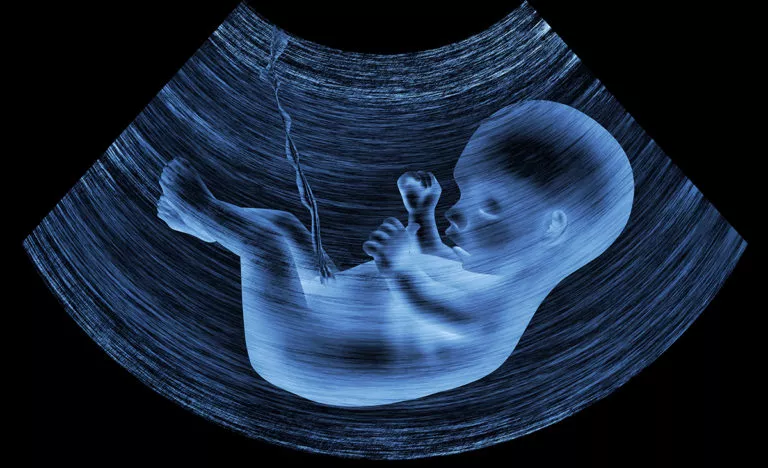Karin Källén, professor of reproduction epidemiology at Lund University, is one of the researchers working to identify and evaluate various risk factors using Swedish health data registers. Within reproduction epidemiology, links are established between local, regional and national registers in order to map connections between prenatal/early-life factors and later health data.
The children who weigh least
“We are looking at the percentage of newborns, 2.5 per cent, who weigh least. These include those who are smaller than they would have been if they had reached their full potential. From these studies a connection can be seen between being small for gestational age due to inhibited growth during pregnancy and having problems later in life, such as cardiovascular diseases, type 2 diabetes, obesity and psychiatric problems.”
Know more about the parents
In order to study these connections, it is therefore important to know which babies are normally small at birth and which are small due to not having grown sufficiently well during the foetal period.
“We must know more about the parents if we are to understand this”, says Peter M Nilsson, consultant and professor of clinical cardiovascular research at Lund University. In Sweden, the average weight of a newborn is approximately 3 500 grams and the limit for what we call low birthweight is 2 500 grams. In many countries outside Europe the average weight is considerably lower. The average weight in India, for example, is around 2 500 grams, as many parents are small.”
During the 1970s and 80s, researchers in Lund formulated normal curves for foetal growth. If there is a clear drop below the growth curve, it can indicate that problems may arise. If foetal growth is constantly under the normal curve, it may be because the mother is small, but it could also indicate something suboptimal during the pregnancy.
Even a little ‘sprat’ can go on to thrive
“Babies who are born early, in what is called late prematurity, account for most of the small infants in hospitals’ maternity wards”, says Karin Källén. “Studies has shown that this group has a risk of increased ill-health and mortality.”
Are these risks due solely to the fact that the baby was born prematurely? No one knows how much is due to problems during the pregnancy and how much is attributable to premature birth, considers Karin Källén. Her study indicates that the risk of increased ill-health for the child may be the result of problems during the pregnancy.
“If the reason that the baby was born prematurely was due to the water breaking, we could detect no increase in ill-health or mortality during the neonatal period. But if the reason for poor foetal growth was that the mother had preeclampsia, previously called toxaemia, we saw an increased risk.”
Extremely premature birth
According to Karin Källén, the situation is different in the case of an extremely premature birth, as this in itself leads to a considerable risk of increased ill-health and mortality. Underlying causes are an additional factor. Many babies among those born extremely early also exhibit poor growth – which indicates that something is wrong.
Nowadays, the foetus is monitored throughout the pregnancy in order to follow the growth rate.
“We have carried out follow-ups on extremely premature babies at 2.5 and 6 years, and we are now conducting a 12-year follow-up in which we are examining school grades and ill-health. However, when conducting register studies it is difficult to see why foetal growth has been inhibited – whether the problem lies with the foetus or if it is due to something between the placenta and the mother.”
Woman’s health condition
If the problem lies with the mother, poor growth may be due to a damaged placenta, various virus infections or the effects of high blood pressure and preeclampsia. Another likely cause is that the mother has a health condition, such as diabetes, cardiovascular diseases or depression. Karin Källén points out that in these cases the situation may be further complicated if the mother is taking medication.
“It is often difficult to know if it’s the medicines or the woman’s health condition that has caused the problem. I think there should be more research on this. We need to take a closer look at the medicines when these, rather than the mother’s condition, are believed to be the problem behind poor foetal growth. In contrast to factors such as smoking, which we know is harmful to the foetus, medicines are often something that the mother must take in order to feel well during the pregnancy.”
Research has shown that the causes of poor foetal growth, in which the foetus is directly affected, stem mainly from the mother’s lifestyle during the pregnancy. Pertinent factors include poor diet, smoking, drinking alcohol and being under stress. Drug abuse, of course, also has an impact.
The researchers have also noted a connection between conditions during the foetal period – evident as inhibited foetal growth and being born small for gestational age – and health far into middle age. So does this mean infants will face a hopeless situation later in life?
Foetal programming
When a foetus is affected in a way that has consequences later in life, it is referred to as foetal programming. According to Peter M Nilsson, much of this programming is due to epigenetic changes in the foetus.
“We consider that the epigenetic aspect means an increased susceptibility to factors that bring on ill-health. It means heightened vulnerability to the type of poor life quality that we already know leads to common lifestyle diseases.”
Peter M Nilsson emphasises that, despite the findings, the risk of ill-health later in life is low, even for those with poor growth in the foetal period:
“Problems are not preordained just because you were born small – any increased vulnerability can be compensated for by adopting a healthy lifestyle. Even a little ‘sprat’ can go on to thrive!”


